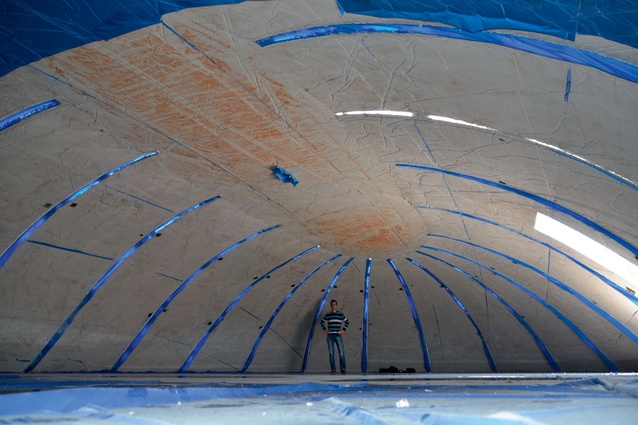Inflatable concrete
Engineers at the Vienna University of Technology have developed a novel technology, which does away with the need for expensive propping.
Instead, a flat concrete slab hardens on the ground and then an air cushion below the plate is inflated, bending the concrete and forming a sustainable shell.
“It is similar to an orange peel, which is regularly cut and then flattened out on the table,” professor Johann Kollegger said. “We do it the other way around, starting with a flat surface and then bending it into a shell.”
The first stage incorporates the creation of a flat slab using regular concrete, which consists of several segments. Wedge-shaped spaces are left between the segments so they fit together perfectly when the structure is bent.
Once the slab is hardened, an air cushion below is inflated. The cushion consists of two plastic sheets welded together. At the same time, a steel cable is tightened around the concrete segments, so the concrete is lifted up at the centre and pushed together from outside. To ensure all the concrete segments move in perfect synchronicity, they are connected with metal beams.
When the concrete is bent, many tiny cracks appear – but this is not a problem for the stability of the shell. “We can see that in old stone arches”, Kollegger said. “If the shape is right, each stone holds the others in place and the construction is stable.” In the end, the structure can be plastered, and then it has the same properties, and is just as stable, as a concrete shell constructed in a conventional way.
The technique has been successfully tested in Vienna.










